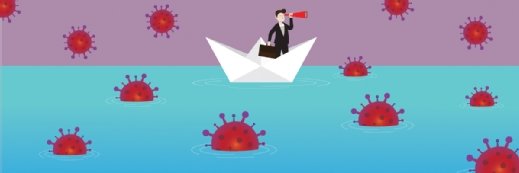
Getty Images/iStockphoto
Did HHS Pandemic Relief Funds Promote Health Equity?
A third of HHS pandemic relief funding went directly toward health equity efforts, while another $29 billion was awarded with instructions to prioritize adversely affected groups.
The Department of Health and Human Services was mostly successful in its pursuit of health equity during the pandemic, at least in terms of pandemic relief fund spending, according to a new assessment from the Government Accountability Office (GAO).
Of the $75 billion HHS earmarked for pandemic relief, $29 billion specifically went to programs benefitting groups that were disproportionately impacted by COVID-19. Another $33 billion was granted to states with instructions that funding should pbenefit groups that were disproportionately impacted by the novel coronavirus.
During the first year of the COVID-19 pandemic, HHS was tasked with allocating money through its Public Health and Social Services Emergency Fund. This pandemic relief spending, mandated by six separate pandemic relief bills, was intended to specifically help promote health equity.
After all, health equity quickly become a key term defining the nation’s initial pandemic trajectory. It didn’t take long for it to become apparent that COVID-19 impacted certain populations worse than others. Black, Latinx, and American Indian/Alaska Native (AI/AN) people have been hospitalized at twice the rate of their White counterparts. Older adults over age 65 and those living in rural areas also emerged as high-risk populations, GAO explained.
Those six appropriations bills gave HHS the authority to allocate funds to provide pandemic relief, with caveats emphasizing health equity work. HHS awarded the funds to the Centers for Disease Control and Prevention (CDC), the Health Resources and Services Administration (HRSA), the Indian Health Service (HIS), and the Office of Minority Health. CDC received about half of the $75 billion in HHS grants.
Together, those four agencies dedicated 35 percent, or $29 million, of their awards to groups disproportionately impacted by COVID-19. They awarded another $33 billion to programs with instructions to prioritize adversely impacted populations.
“For example, CDC issued guidance recommending that awardees—often state health departments—include disproportionately affected communities in their planning, or use certain data or tools that identify vulnerable communities—such as CDC’s Social Vulnerability Index—to inform their pandemic planning, response, or strategies,” GAO wrote.
CDC recommended but did not require awardees to prioritize disproportionately impacted groups because it wanted to allow for program flexibility, the agency told GAO.
GAO spoke with a representative sample of awardee states, noting that each state made efforts to prioritize adversely impacted groups. Particularly, the five states included in the GAO report said they focused on the COVID-19 health disparities program, zeroing in on testing, vaccination, transportation, and behavioral health.
But those efforts did not come without their challenges. For example, in three of the awardee states, it took between 3 and 9 months for state health departments to see the state actually accept the funding. That stymied and delayed efforts to address the pandemic.
Moreover, states experienced capacity problems. State health departments could not hire enough workers to keep up with workforce demands, while their local partners and counterparts also struggled to keep pace.
These challenges were consistent with previous GAO findings, the agency said.
CDC, HRSA, IHS, and Office of Minority Health awarded the remaining $14 billion with no particular instructions to prioritize adversely impacted populations.







